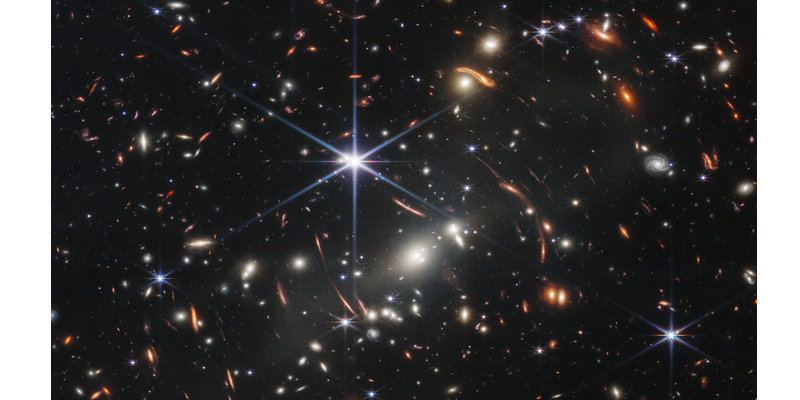
It’s been less than a year since its launch, but the James Webb Space Telescope (JWST) continues to give us insights into the universe we’ve never seen before. Its latest photos have achieved the milestone of discovering the origins of our universe.
In November, astronomers from Canada used the JWST’s First Deep Field photos to identify dense clusters of millions of stars about nine billion light years away, which they believe to be the oldest and first stars in the universe.
“JWST was built to find the first stars and the first galaxies and to help us understand the origins of complexity in the universe, such as the chemical elements and the building blocks of life,” said Lamiya Mowla, Dunlap Fellow at the Dunlap Institute for Astronomy & Astrophysics at the University of Toronto and co-lead author of the study.
The star clusters appear as tiny yellow and red specks and look like sparkles that encircle the galaxy, earning the name ‘Sparkler Galaxy’. The astronomers theorised that the tiny sparkles could be either a young cluster of stars formed about three million years after the Big Bang and are still in the process of developing or they are extremely old groups of stars from the origin of a galaxy called globular clusters. Studying globular clusters can provide us with information on the evolution of the galaxy. Upon researching 12 of these star clusters, astronomers concluded that five of the clusters are the oldest known globular clusters.

An example of a globular star cluster. Source: Wikipedia
Our galaxy, the Milky Way, has about 150 globular clusters, but scientists haven’t been able to determine their exact totality and age. Thanks to the JWST, they are one step closer to being able to calculate an exact age.
Stay up to date on the James Webb Telescope’s findings on Science Feed:
What is the Cartwheel Galaxy that the James Webb Telescope Has Captured?
Madhavi is passionate about everything to do with books, art, literature, films, trivia and food. A former journalist, she believes that asking questions makes life interesting.